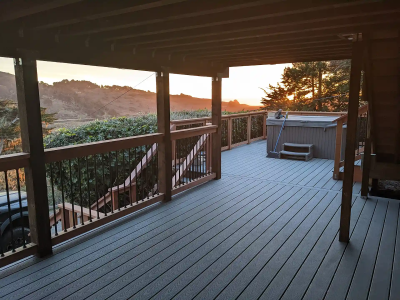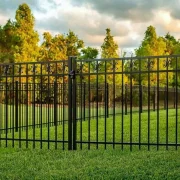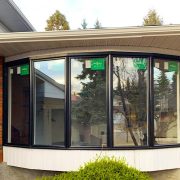A little concrete oasis can feel a like a pocket-size paradise if you treat it with intention. You may think you’ll need a large swath of land to live sustainably, but that is not necessarily the case. If you plan wisely, a few hundred square feet can become an extension of climate solution that benefits wildlife, mitigates on-site heat, and even saves you some money. Sustainable landscaping also offers an outlet for creativity — design beauty while doing good. This guide will help you move forward chapter by chapter, and you might discover that small changes add up to a substantial green benefit in the city.
You can follow this page https://www.epa.gov/watersense/landscaping-tips to learn more about landscaping tips.
Why Sustainability Matters
City lots soak up heat, channel stormwater into sewers, and often lack healthy soil life. When you landscape sustainably, you break that pattern and introduce real ecological benefits. You create living soil that stores carbon, shade that lowers neighborhood temperatures, and plant communities that feed birds and bees. Sustainable yards also cut long-term costs because native shrubs stay healthier, drip lines waste less water, and organic lawn care keeps fertilizer bills low.
In addition, green space reduces stress levels; studies show even small gardens lower blood pressure and improve mood. Most important, your choices shape how friends and neighbors think about outdoor space-showing that thoughtful design beats square footage every time and inspiring others to follow your lead.
Choosing Native Plants
City conditions can be harsh, yet native species evolved with your local climate, making them resilient to drought, pests, and temperature swings. To build a thriving mini-ecosystem:
- Scout local winners: Visit nearby parks and botanical gardens to see what flourishes without extra fuss. Snap photos or jot down names for later research.
- Layer for habitat: Combine groundcovers, grasses, and flowering perennials so insects, birds, and small mammals all find food and shelter in different vertical “zones.”
- Design around pathways: Map beds before any hardscape planning so roots have room to weave around pavers, seating areas, or a tiny fire pit.
- Keep sunlight in mind: Tuck taller plants along fences; place shade-lovers under shrubs or small trees so every niche is used efficiently.
- Skip the chemicals: Natives need fewer pesticides, protecting kids, pets, and waterways while saving you time and money.
Once established, these plants ask for little more than seasonal pruning. Their deep roots loosen compacted soil, absorb runoff, and keep your micro-climate stable. Over time you’ll notice more butterflies, songbirds, and even beneficial insects like lacewings patrolling for aphids.
How Much Water Is Enough?
Small yards still suffer from over-watering. A simple soil testing kit tells you more than a pricey smart sprinkler. Probe two inches down; if the soil clumps, wait. If it crumbles, water deeply but infrequently so roots grow down, not out. Consider drip irrigation over spray heads-especially in regions where evaporation is high or municipal water is costly. If you live where winters bite hard, such as those doing landscaping in Minneapolis, bury drip lines below frost depth and use quick-disconnect fittings for easy winter blow-outs. Finally, add rain barrels; they catch runoff for free plant drinks during dry spells.
Composting Made Easy
Urban composting can be odor-free and compact if you choose the right system, and it turns kitchen scraps into soil gold:
- Pick the right bin: A sealed tumbler or stackable worm bin fits on a balcony and keeps rodents out while speeding decomposition through constant aeration.
- Balance greens and browns: Alternate layers of veggie scraps, coffee grounds, and grass clippings with shredded leaves or paper to maintain the right carbon-to-nitrogen ratio and keep odors low.
- Turn weekly: Aeration adds oxygen, which microbes need to break down material quickly; you’ll harvest finished compost in about three months during warm weather.
- Follow mulch depth guidelines: Work a half-inch of compost into beds each spring, then cover with two inches of shredded bark to lock in moisture and suppress weeds.
- Reduce synthetics: Regular compost boosts soil nutrients slowly, reducing the need for chemical fertilizers and cutting nutrient runoff into city drains.
Measuring Your Green Impact
Tracking results keeps motivation high and helps you fine-tune your methods. Use a pocket notebook or free phone app to log gallons captured in your rain barrel, record butterfly and bird species you spot, and track monthly water bills. For surfaces, swap concrete paths for permeable pavers and note how quickly puddles disappear after heavy storms. Click this page to know more details.
In fact, you can even estimate the carbon sequestered in your yard – all you have to do is sum your plant biomass and soil organic matter, and the use a homeowner carbon calculator online. This is a great experience to share with a neighbor or even social media ethnographers to create notice and local collaboration around sustainable action. In the long run, a personal dataset will be created which shows that sustainable choices (regarding biodiversity, community resilience, and your own peace of mind) have been the better choice.
Small yards can speak volumes. By choosing natives, watering wisely, mastering compact composting, and keeping tabs on your progress, you show that stewardship is tied not to the size of your lot but to the size of your commitment. Keep experimenting, share cuttings with neighbors, and enjoy the ripple effect your green patch creates. The city needs what you-and your landscape-can give.














Comments